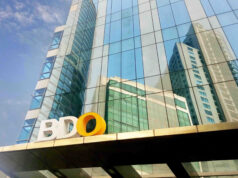Property-related transactions worth P321B reported by banks as suspicious
BANKS REPORTED suspicious property-related transactions worth P321.4 billion from 2019 to 2020, based on an assessment by the Anti-Money Laundering Council (AMLC), reflecting the sector’s tendency to be a recipient of illicit funds.
The “dirty money” watchdog said covered persons submitted 5,416 suspicious transaction reports (STRs) from 2019 to 2020 on accounts involving real estate players.
Among these reports, 76% showed suspicious indicators. Meanwhile, 24% were reported on the basis of their involvement in predicate crimes covered by the country’s anti-money laundering and counter-terrorism (AML/CTF) laws.
The property sector could become a vehicle for parking illicit funds in the economy as these can be disguised as safe investments, the AMLC said in its assessment.
It said criminals can take advantage of how properties can serve as safe houses and can also be income generating as these can be rented out.
“Real estate is as attractive to criminals as it is to any investor since its prices are generally stable and are likely to appreciate over time,” the AMLC’s study said.
The biggest chunk or P274.619 billion in transactions reported based on suspicious indicators were because they had no underlying legal or trade obligation, purpose, or economic justification. This was followed by transactions where the amounts involved were not commensurate to the financial capacities of clients (P2.5 billion), and other identical property deals exhibiting the same suspicious trends (P1.277 billion).
Meanwhile, for STRs filed due to their involvement in predicate crimes, transactions related to fraud or swindling (P42.074 billion) were the highest in terms of value, followed by scams and other violations of the Securities and Regulation Code (P640.4 million) and drug trafficking (P158.62 million). There were also STRs related to plunder (P34.59 million) and graft and corruption (P5.01 million).
On the other hand, three STRs filed in the period covering transactions worth P86.3 million were found to be possibly related to terrorism financing. There were no cases that were linked to proliferation of weapons of mass destruction and proliferation financing.
“While the understanding of targeted financial sanction on terrorism financing and proliferation financing of the real estate sector is arguably in its developing stage, this does not mean that threats do not exist,” the AMLC said.
Based on its assessment, the AMLC said the overall threat in the property industry is medium, which means there is “moderate volume of criminal activities and associated factors.”
This vulnerability assessment took into account the size of the sector; its client base profile; level of cash activity; use of agents and intermediaries and level of anonymity and non-face-to-face transactions; difficulty in tracing records; existence of dirty money schemes; and cross border international transactions.
Following the recommendation of the Financial Action Task Force (FATF), Republic Act 11521 passed in January included real estate developers and brokers as covered persons of the country’s anti-money laundering laws. This, as the FATF said that properties made up 30% of criminal assets confiscated globally between 2011 and 2013.
Around 3,288 brokers and developers have registered as covered persons with the AMLC as of May. The AMLC said they are faced with hundreds of pending registrations due to their limited manpower.
The AMLC this month released new guidelines which further tightened rules on monitoring real estate transactions. It provided a list of red flags that brokers and developers should monitor in their dealings with clients.
The Philippines is currently in the FATF’s gray list of jurisdictions that are under increased monitoring to prove their progress in implementing stricter AML and CTF laws.
The country will submit its first progress report to the FATF in September. Government officials expect the country will be able to exit the gray list by January 2023. — L.W.T. Noble



